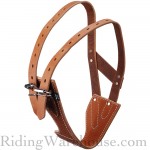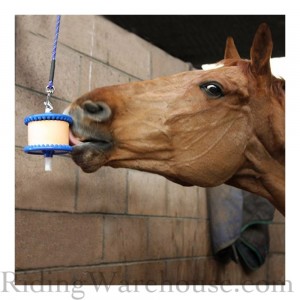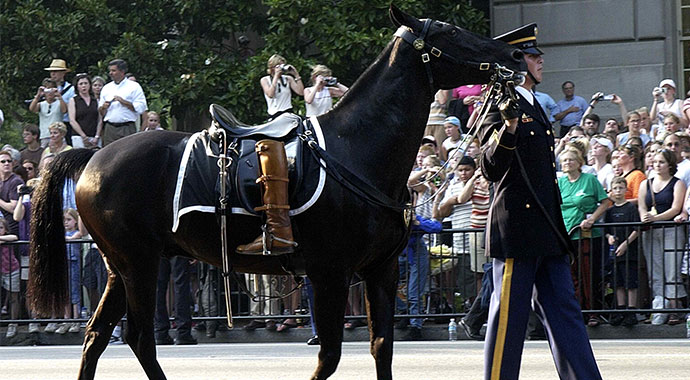Any horse owner will happily tell you about their herd’s idiosyncrasies. From smelling peoples’ eyes to drinking chocolate milk, horses can have some of the strangest individual personality traits. However, some behaviors that at first may seem to be nothing more than strange mannerisms, can actually be cause for alarm.
Cribbing and Weaving
You may have heard them referred to as stable vices, but repetitive, continual, seemingly meaningless movements are better known as stereotypic behaviors. There are two main categories of stereotypic behavior — oral and locomotor. Crib-biting and wind-sucking are oral stereotypes while weaving and box-walking are locomotor. These stereotypes are thought to be caused by a number of different factors, including insufficient grazing, limited exposure to other horses, excess energy, genetics, frustration, and stress.
- A crib-biting horse will hook its incisors onto an object (such as a fence rail), drop its lower jaw, and open its throat. It will then arch its neck, pull backward, and make a belching sound.
- Wind-sucking is similar to crib-biting, but the horse will arch its neck and suck air into the windpipe without needing to grab a solid object.
- A weaver will repetitively sway side to side, shifting weight and moving its head and neck back and forth.
- Box-walking (or stall-walking) is when a horse repetitively walks or paces around the sides of a confined area, usually a stable.
While these behaviors may be a nuisance in the short term, if left untreated they can cause complications such as the premature wearing of teeth, colic, weight loss, or knee problems.
Hey, head’s up. Purchasing products through clicking the the links or product pics that follow may result in providing us a little kick-back money. To learn more see the affiliate disclaimer near the end of this story.
Prevention
The best way to battle these stereotypic behaviors is to avoid confining your horses for long periods of time, and turn out your horses as often as possible so they can burn off excess energy and socialize. Regular exercise will help reduce stress, which will help to prevent behaviors that occur out of boredom or frustration. You can also provide sensory stimulation by offering toys, like a Jolly Ball, to combat boredom.
If you have to keep your horse in a stall for long periods of time, make sure he can still socialize. Whenever possible, allow your horse to interact with other horses in the stable. If there are no other horses, consider a goat or pony as a stable friend. If you simply don’t have the room (or funds) for more animals, you can try a stable mirror.
For cribbing in particular, make the surfaces of your stalls and paddock less desirable. Coat the surfaces your horse cribs on with cayenne pepper or an anti-chew spray. You can also install a polytape electric fence to deter cribbing, or purchase a specialized “cribbing collar” if the behavior is otherwise unstoppable by other methods.
Wood-Chewing
Sometimes horses will chew or nibble on any available wood surface. Horses chew wood for a number of reasons:
- Part of the horse’s natural diet includes nibbling on bark and small branches that provide woody fiber. When horses are unable to carry out this behavior, they may turn to chewing on fence boards.
- Horses may chew wood when they aren’t getting a sufficient amount of daily fiber.
- An under-stimulated or under-exercised horse will find an activity to occupy its mind.
Prevention
Whenever possible, provide turnout with other horses and access to hay or pasture 24/7. If your horse has to remain in a stall, feed hay in a slow-feeder to maximize the time hay is available and make sure the horse is still getting plenty of exercise and socialization. You can also use some of the same prevention tactics as used with “cribbers”, by coating wood with anti-chew spray or other distasteful liquids.
Pica
Pica is the consumption of soil, sand, and other nonfood items. It’s in a horse’s nature to spend the majority of their time grazing. If this activity is cut short they are likely to seek other things to consume. Since pica can lead to serious and even fatal digestive problems, it should not be taken lightly.
Prevention
Begin by making sure your horse’s diet contains all the necessary nutrients for good health. By furnishing the proper amounts of salt and trace elements, you will keep your horse from developing cravings that drive it to lick, chew, and ingest non-food items. Since your horse has a need to chew, provide items like carrots and long-stemmed foliage for a variety of chewing experiences that will help satisfy your horse’s impulses. Additionally, you can try stall toys, salt licks, etc., to keep your horse’s impulses pointed in a healthy direction.
It’s always a good idea to consult with your vet when your horse starts repeating any abnormal behavior. A few times might not mean much, but if your horse starts cribbing, weaving, wood chewing, or eating objects like manure, sand and dirt regularly, get some professional advice to save yourself the long term distress of veterinary bills or irreparable injury.
Main Image by Sarah Williams
Product photos courtesy of Riding Warehouse
Just so you know, clicking the above links takes you to the product on the Riding Warehouse website. This makes shopping easy and convenient for you. We do get a little kick-back from items purchased, giving us resources to bring you more stories, but your price stays the same. It’s a win-win! Standard shipping in CA is free from Riding Warehouse. However, local riders can choose to pick-up orders on-site. Just choose that option during checkout. Happy Trails!








Loved Liz Greene’s article! charlene